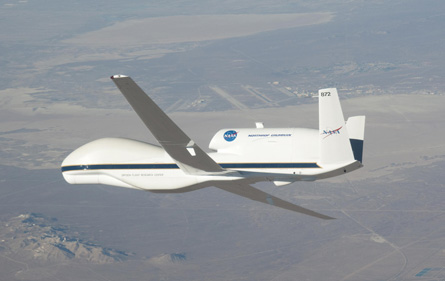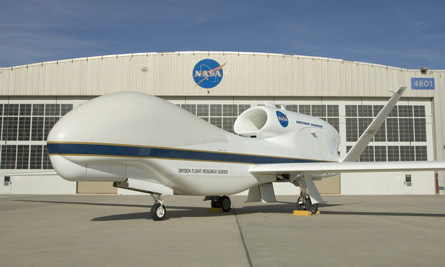Northrop Grumman achieved the delayed return to flight of a RQ-4A Global Hawk high-altitude, long-endurance unmanned air vehicle for NASA in late October, bringing to an end a roughly five-month slippage in preparing for the sortie.
Conducted from NASA's Dryden Flight Research Center at Edwards AFB, California, the 23 October event paves the way for a planned series of six Earth observation flights that will take place over the Arctic region and the Pacific Ocean from early 2010.
Northrop says aircraft 872 - one of two originally advanced concept technology demonstration examples of the US Air Force's Global Hawk that were transferred to NASA ownership in 2007 - was airborne for almost 4h on what was its first sortie since May 2003.
 |
|---|
© Carla Thomas/NASA |
Flight activities included checks to the UAV's engine, flight-control systems and communications equipment, says Northrop. The company had initially expected the aircraft to fly in mid-May, but encountered delays during the completion of work on PC-based ground control equipment.
The Global Hawk will be used to support atmospheric testing activities by NASA and the US National Oceanic and Atmospheric Administration from early in 2010, with the air vehicle to be first equipped with 11 new scientific instruments.
 |
|---|
© Tony Landis/NASA |
In addition to supporting the Earth observation mission, NASA's Global Hawks will also be made available to support further activities by Northrop, such as in advancing the integration of UAVs into non-segregated airspace in the USA.
Source: Flight International























